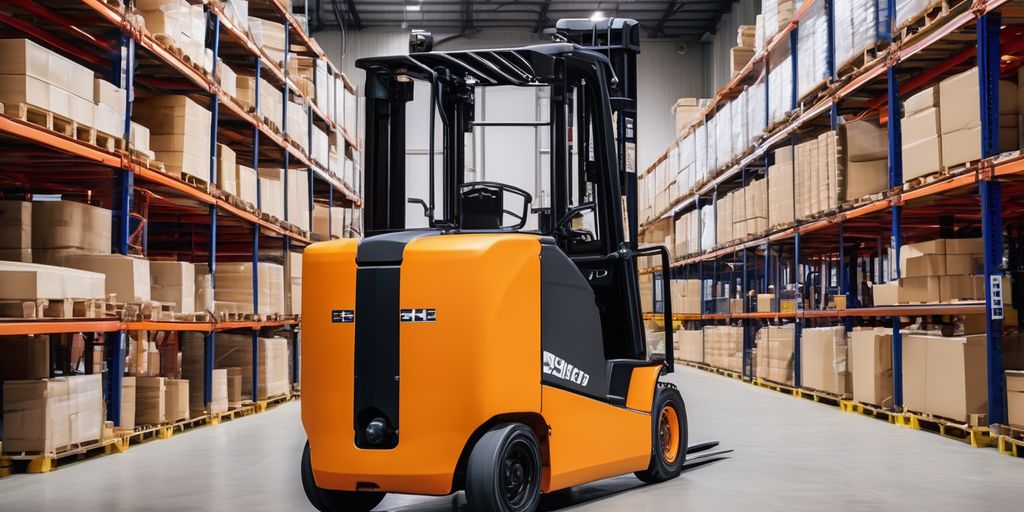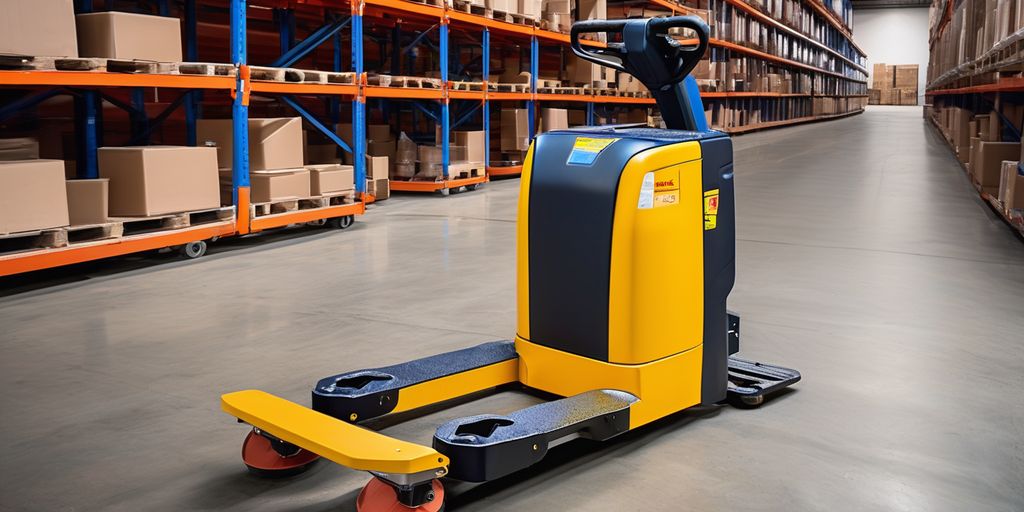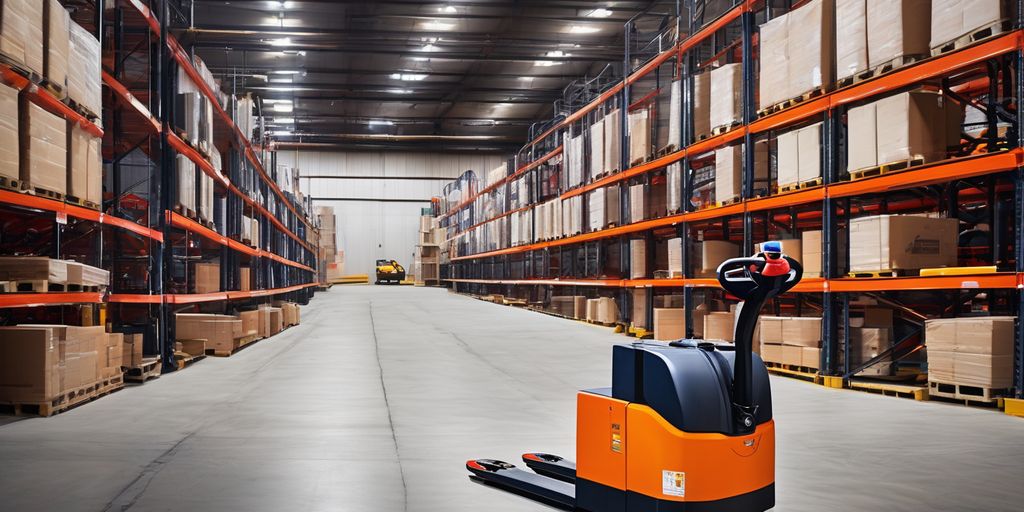Forklifts have been essential tools in warehouses and factories, changing how goods are moved and stored. As we look to the future, electric forklifts are set to lead the way. This article will explore the latest trends and innovations in material handling and what lies ahead for forklifts.
Key Takeaways
- Electric forklifts are becoming more popular due to their efficiency and lower environmental impact.
- New battery technologies, like lithium-ion, are making electric forklifts more reliable and longer-lasting.
- Automation and smart technology are transforming forklifts into data-driven machines.
- Sustainability is a major focus, with efforts to reduce carbon footprints and improve energy efficiency.
- Operator safety and comfort are being enhanced through better ergonomic designs and advanced safety features.
The Rise of Electric Forklifts

Electric forklifts are becoming more popular in warehouses and industrial sites. They are changing how goods are moved and stored. Electric forklifts are quieter, more powerful, and more efficient than traditional ones. They also help businesses be more eco-friendly.
Advantages of Electric Forklifts
Electric forklifts have many benefits. They are easier to maintain and cost less to run. They also don't produce exhaust fumes, making them better for the environment. Plus, they are easier to move around in tight spaces.
Market Trends Driving Electrification
The push for greener equipment is making electric forklifts more popular. Studies show that 69% of all forklifts shipped are electric. The market is expected to grow by 14.9% until 2030. This growth is driven by the need for cleaner and more efficient machines.
Challenges and Solutions
Switching to electric forklifts has some challenges. The cost of new batteries can be high. However, the long-term savings on fuel and maintenance make up for it. Companies are also working on better battery technologies to make electric forklifts even more efficient.
Innovations in Forklift Battery Technology

Lithium-Ion Batteries
The rise of lithium batteries has redefined the standard in the material handling industry. These batteries offer several advantages over traditional lead-acid batteries, including longer life, quicker charging, and consistent power output. As research continues, alternative materials and emerging technologies like hydrogen fuel cells are also making inroads, promising even greater improvements in the future.
Battery Management Systems
Battery management systems (BMS) are crucial for maintaining the health and efficiency of forklift batteries. These systems monitor various parameters such as temperature, voltage, and state of charge, ensuring optimal performance and longevity. By catching potential issues early, BMS can help reduce downtime and maintenance costs.
Charging Infrastructure
The development of comprehensive charging solutions is essential for the widespread adoption of electric forklifts. Collaborations between battery manufacturers, forklift producers, and charging infrastructure providers are paving the way for more efficient and cost-effective charging options. Innovations in this area not only streamline operations but also reduce energy consumption, making electric forklifts a more sustainable choice.
The future of forklift battery technology looks promising, with ongoing advancements and collaborations driving the industry forward.
Automation and Smart Forklifts
Autonomous Forklifts
Autonomous forklifts are transforming warehouses by using sensors, cameras, and advanced control systems. These machines can navigate aisles, pick up and drop off loads, and even communicate with other equipment. This reduces the need for constant human intervention, improving efficiency and safety by minimizing human error. The global autonomous forklift market size was valued at USD 4.51 billion in 2023 and is anticipated to reach around USD 13.91 billion by 2033, growing at a significant rate.
IoT Integration
The Internet of Things (IoT) is making forklifts smarter. By connecting forklifts to a network, operators can monitor their performance in real-time. This helps in predictive maintenance, reducing downtime, and improving overall efficiency. IoT-enabled forklifts can also communicate with other machines, creating a more cohesive and efficient workflow.
Data-Driven Operations
Data is becoming a crucial part of material handling. Smart forklifts collect data on their operations, which can be analyzed to optimize performance. This data can help in making informed decisions, improving productivity, and reducing costs. Data-driven operations are the future of material handling, making processes more efficient and reliable.
Sustainability and Environmental Impact
Reducing Carbon Footprint
Electric forklifts are a key player in reducing the carbon footprint of material handling operations. These forklifts produce zero emissions, making them an eco-friendly alternative to traditional fuel-powered models. Companies are increasingly adopting electric forklifts to align with broader environmental goals and contribute to long-term ecological sustainability.
Energy Efficiency
The material handling industry is shifting towards energy-efficient practices. This includes the use of advanced technologies that minimize energy consumption. For instance, electric forklifts powered by rechargeable batteries reduce the dependence on fossil fuels. This not only helps in cutting down operational costs but also supports environmental conservation efforts.
Recycling and Disposal
Sustainable practices in material handling also extend to the recycling and disposal of forklift components. Companies are focusing on using recycled materials in manufacturing and ensuring that old batteries and parts are disposed of in an environmentally friendly manner. This holistic approach helps in maintaining ecological balance and promotes a sustainable future.
Ergonomics and Operator Safety
Enhanced Operator Comfort
The design of forklifts is evolving to prioritize operator comfort and safety. Ergonomic enhancements, such as adjustable steering columns, comfortable seating, and intuitive controls, are becoming standard features. Manufacturers are recognizing the importance of reducing operator fatigue and injury risk. Furthermore, advancements in visibility through improved lighting systems and ergonomic mirrors contribute to a safer working environment.
Safety Features
Proper ergonomics means less strain on the driver through shifts, and reduced chance of RSIs and associated sick leave. Safety accessories are becoming more common to prevent operator accidents, equipment damage, and costly downtime. Some of these safety features include:
- Blind spot cameras
- Alarms and warning systems
- Flashing lights
- Speed limiters
- Seatbelts
- Fall protection
Training and Certification
Training and certification are crucial for ensuring that operators can safely and effectively use forklifts. Comprehensive training programs cover everything from basic operation to advanced safety features. Certification ensures that operators are knowledgeable about the latest safety protocols and ergonomic practices.
When operators feel uncomfortable or are exposed to excessive physical strain, their concentration decreases, which in turn reduces the quality of their work.
Future Trends in Material Handling

Integration with Warehouse Management Systems
The future of material handling is closely tied to the integration with Warehouse Management Systems (WMS). This integration allows for seamless operations, reducing errors and improving efficiency. Companies are increasingly adopting WMS to streamline their processes and enhance productivity.
Advancements in AI and Machine Learning
As we approach 2024, the material handling industry is set to undergo significant changes driven primarily by technology and sustainability. The future of autonomous forklifts: revolutionizing material handling with AI and machine learning for enhanced productivity, safety, and cost savings in warehouse operations. These advancements will enable forklifts to operate more independently, making real-time decisions and optimizing routes.
Global Market Outlook
The global market for material handling equipment is expected to grow significantly in the coming years. This growth is driven by the increasing demand for efficient and sustainable solutions. Companies are investing in new technologies to stay competitive and meet the evolving needs of their customers.
The material handling industry is experiencing significant changes in its workforce due to technological advances and evolving market dynamics. A number of material handling industry trends are reshaping the market, changing the workforce landscape.
Conclusion
As we look ahead, it's clear that electric forklifts are set to play a major role in the future of material handling. These machines are not only more efficient and quieter but also better for the environment. The move towards electric power, along with other new technologies, promises to make warehouses and industrial sites safer and more productive. As these trends continue to grow, businesses that adopt these innovations will likely see big benefits in terms of cost savings and operational efficiency. The future of forklifts is bright, and it's electric.
Frequently Asked Questions
What are the main advantages of electric forklifts?
Electric forklifts are quieter, more powerful, and more efficient than traditional ones. They offer better performance, greater maneuverability, and lower maintenance costs. Additionally, they are environmentally friendly since they don’t emit exhaust fumes.
What challenges do electric forklifts face?
Electric forklifts can face challenges like higher upfront costs and limited battery life. However, advancements in battery technology and charging infrastructure are helping to address these issues.
How do lithium-ion batteries benefit electric forklifts?
Lithium-ion batteries charge faster, last longer, and require less maintenance compared to traditional lead-acid batteries. They also provide consistent power, improving the forklift's performance.
What is the role of automation in modern forklifts?
Automation in forklifts includes features like autonomous navigation and IoT integration. These advancements help in increasing efficiency, reducing human error, and enabling data-driven operations.
How do electric forklifts contribute to sustainability?
Electric forklifts help reduce the carbon footprint as they do not emit exhaust fumes. They are also more energy-efficient and support sustainability goals by using rechargeable batteries.
What safety features are important in electric forklifts?
Important safety features in electric forklifts include enhanced operator comfort, advanced braking systems, and sensors that prevent collisions. Proper training and certification for operators are also crucial for safety.




Leave a comment
This site is protected by hCaptcha and the hCaptcha Privacy Policy and Terms of Service apply.